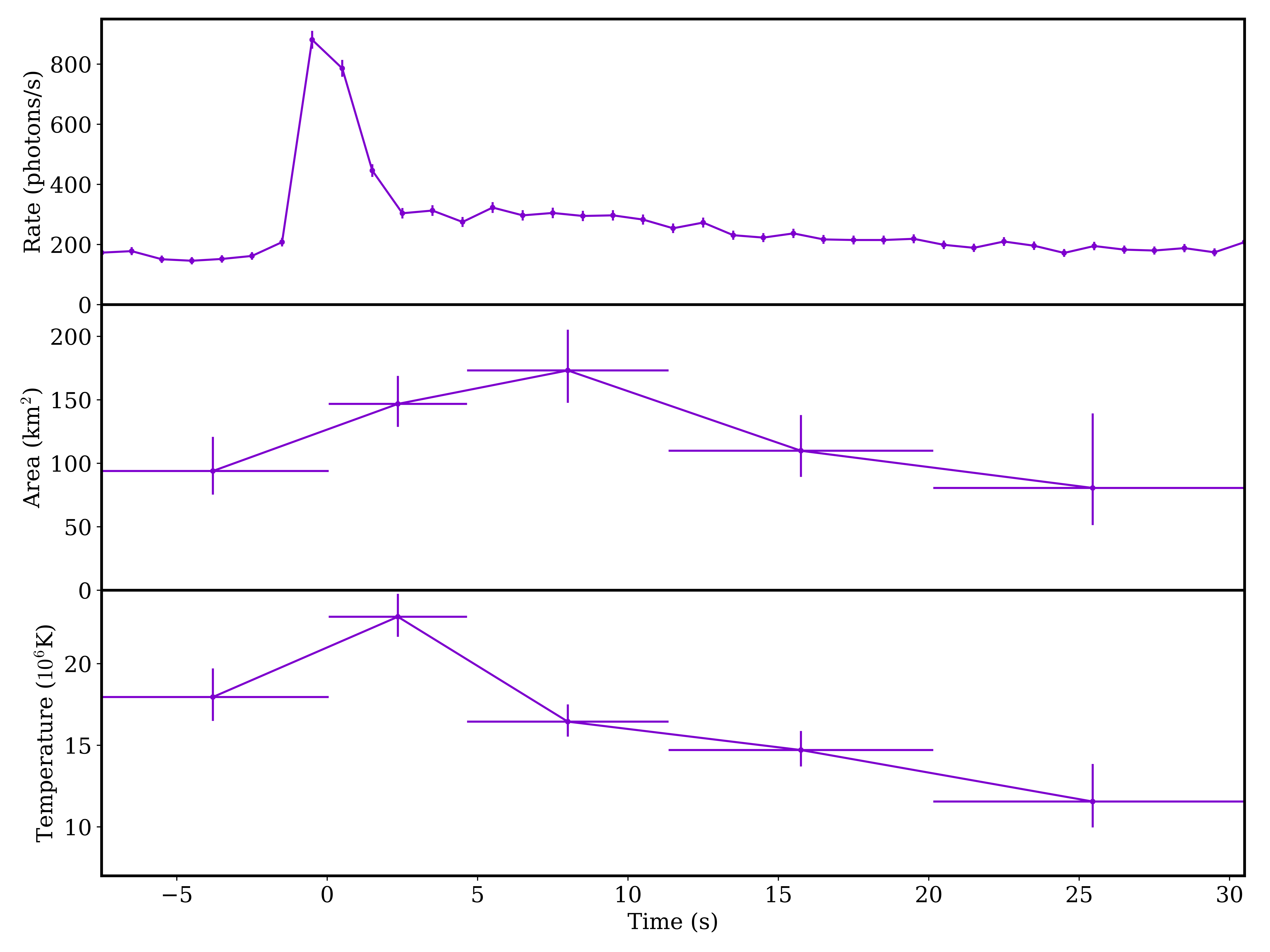NICER / ISS Science Nugget
for March 19, 2020
Thermonuclear X-ray bursts reveal that Swift J1858.6-0814 hosts a neutron star
Many of NICER's observations are of X-ray binaries, where a normal star
orbits a compact object (either a neutron star or a black hole) and
deposits material onto it. As this material falls deep into the
gravitational well of the compact object, it releases copious amounts of
energy, much of which is radiated away as X-rays.
It is important but difficult to determine whether the compact object is
a neutron star or a black hole.
Systems hosting black holes and neutron stars can look similar but there
are several features which are unique to neutron star systems.
One such feature is X-ray bursts, where thermonuclear explosions occur
on the surface layer of the neutron star. These are observed as sudden
bursts of X-rays lasting around 100 seconds.
NICER has been monitoring the X-ray binary Swift J1858.6-0814 since it
went into outburst in 2018. This source has been particuarly exciting as
it has shown exceptionally strong variability. For various reasons, most
scientists thought that it was a black hole X-ray binary. Since it has
emerged from Sun block in February, NICER observations have shown that
Swift J1858.6-0814 has become bright and usually steady, apart from
occasional bursts and dips.
NICER has detected 3 bursts so far and analysis of their spectra (see
figure) shows that they are thermonuclear bursts so, unexpectedly, Swift
J1858.6-0814 contains a neutron star.

Figure:
Time evolution of a thermonuclear X-ray burst from the neutron-star
X-ray binary Swift J1858, with brightness (NICER X-ray detection rate)
in the top panel. The lower panels show the results of spectral analysis
coarsely binned in time, where the temperature and area of the thermally
(blackbody) emitting region are tracked: the temperature of the star's
surface layer peaks during the initial explosion, but as the burning
layer expands outward, increasing in area, it cools. Finally, the area
returns to its starting value as the "mushroom cloud" collapses back
onto the surface.
The most recent burst also shows photospheric radius expansion. This
occurs when the burst becomes bright enough that the radiation forces
the emitting layer to expand rather than growing brighter. This happens
at a specific luminosity so provides a standard candle: from the
apparent brightness we can estimate the distance. Swift J1858.6-0814
turns out to be around 50,000 light years away so is also one of the
most distant X-ray binaries in the Galaxy.
This work is being led by Douglas Buisson of Southampton University in
the UK and has been reported in Astronomers
Telegram #13563.
<< Previous
Main Index
Next >>